
The Equality Act
The Equality Act and the Public Sector Equality Duty are both general duties that seek to “harmonise” equalities duties across all nine protected characteristics. Whilst there are secondary legislations to strengthen these more broad-based steps, the overarching Equalities legislation makes very few references to making transport accessible. The Public Sector Equality Duty is outlined as telling public bodies, and private companies who deliver a public service, that they must “take steps” to “consider” how any action will impact groups that fall under a protected characteristic.
Under the Equality Act, a person is only able to take a discrimination claim to the civil courts. Further, discrimination claims can only be made on individual cases of discrimination (as in one specific instance, which can be applied to an individual or group of people, or an organisation). This means that every time a person is discriminated against, even if it is by the same body, another individual claim must be made.

Trains
As a condition of their operating licence, all licensed train and station operators are required to write and follow an Accessible Travel Policy (ATP). These policies must document how operators will provide an equitable service to disabled passengers across a range of areas including assistance, ticketing and staff availability. The regulator, the Office of Rail and Road (ORR), must approve the policies before they grant licences, and is also responsible for monitoring and enforcing compliance.
Train companies must also provide training for staff on disability awareness.
The ATP must detail how the operator will provide the two types of assistance:
- pre-booked passenger assistance (arranged by the passenger up to 2 hours in advance) must always be provided “at any station during the hours that trains are scheduled to serve that station”;
- Turn Up and Go (un-booked) must be provided “where reasonably practicable”.
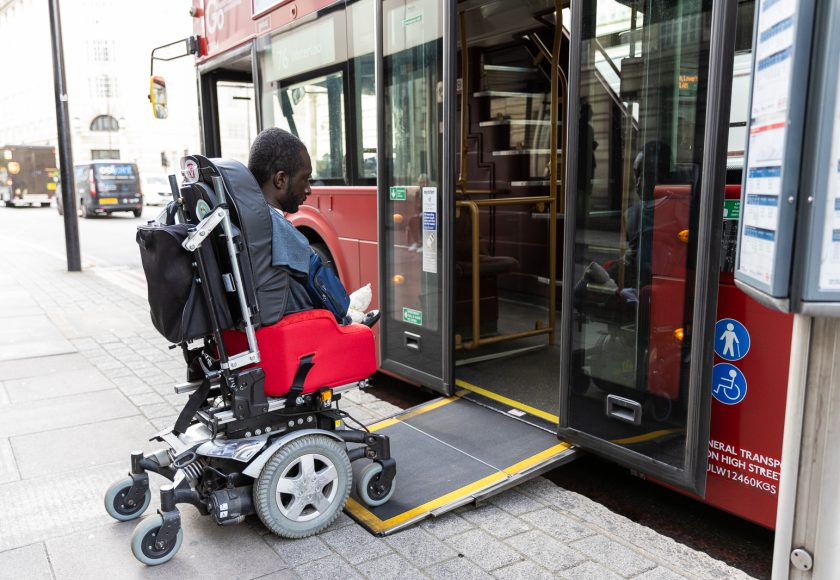
Buses
All bus vehicles were meant to comply with the Public Service Vehicle Accessibility Regulations 2000 (PSVAR) by 2017, and all coach vehicles by 2020. However, the PSVAR regulations only apply to buses which can carry 22 or more passengers. Additionally, they rely on a ‘standard’ size wheelchair to determine the design of bus interiors which has not increased to reflect modern mobility aid sizes.
The 2017 Bus Services Act allows Government to require local operators to provide key information to disabled passengers in accessible formats. In 2023 those powers were used to introduce rules requiring local bus and coach services to provide audio-visual information on the route and direction, upcoming stops, and details of diversions. However, services have until October 2026 before they must do this.
Legislation requiring drivers to be trained in disability awareness came was introduced in March 2018. Department for Transport data shows 99% of bus operators required drivers to take this training, yet an audit from Bus Users UK found only 89% of drivers reported having been trained. There is no data on the quality or effectiveness of said training.
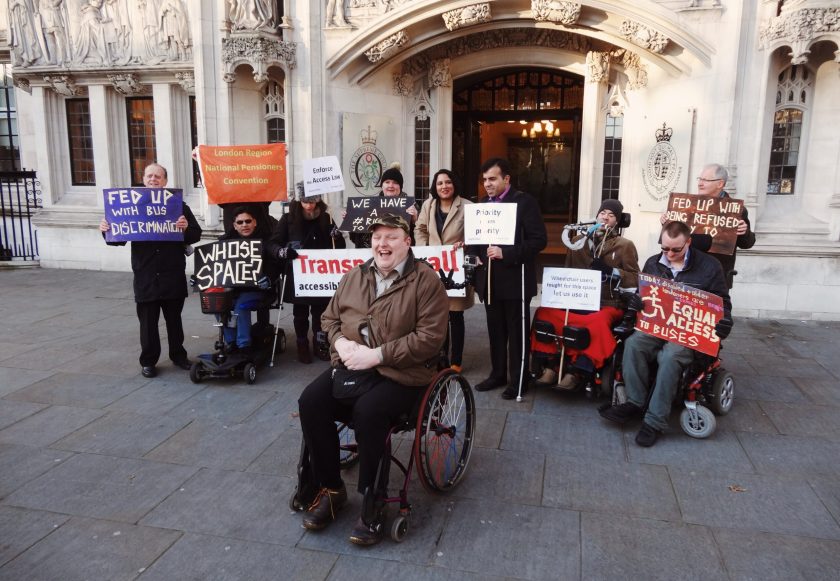
Something that has been an enduring issue for disabled people using buses is conflicts around the priority space, for example, what a driver should do if a wheelchair user wishes to board but the space is occupied by a buggy. In 2017 Doug Paulley took his case on this issue against the bus operator FirstGroup to the Supreme Court, citing the Equality Act (2010)’s principle that service providers must make “reasonable adjustments” for disabled service users. The Supreme Court ruled that FirstGroup had failed to make sufficient adjustments for the needs of disabled passengers, and set a legal precedent requiring operator’s to adopt a policy of wheelchair users taking priority in the space. In practice this should look like drivers asking the passenger in the space to move, and if they don’t, to ask them again more insistently.
The Department for Transport published Bus Back Better in 2021; the National Bus Strategy for England. It requires transport authorities and bus operators to produce a Bus Service Improvement Plan detailing the changes they will make. Additionally, within the strategy the Government made a commitment to:
- Ensure that Government-funded buses deliver greater accessibility (for example, space for a second wheelchair, hearing loops and audio-visual information).
- Review the eligibility criteria for concessionary schemes.
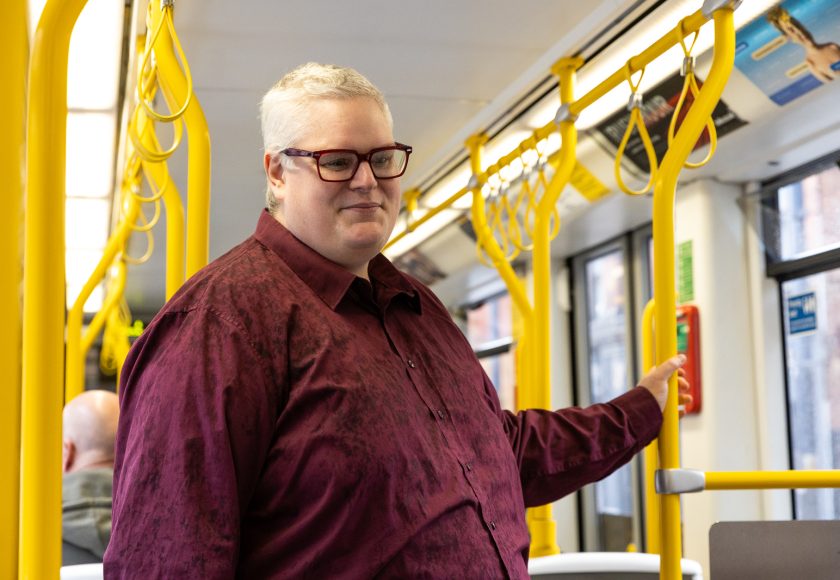
Light rail, metro and trams
As is the case for heavy rail, the Department for Transport can grant exemption orders to light rail operators authorising the use of vehicles on a network even if they do not comply with accessibility regulations. Many such exemptions are in place, covering light rail systems including Docklands Light Railway, Blackpool Tramway and London Underground, for specifications such as dimensions of priority space, provision of boarding devices, and audio/visual announcements.
Light rail is fast, high-frequency and high-capacity, and often considered the vital arteries of an urban area. However, in some cities many disabled people are locked out of benefitting from these features, due to barriers such as overcrowding and lack of step-free access. For example:
- Only 92 out of 272 London Underground stations have step-free access, although at around half of these there is no level boarding and so a manual boarding ramp is required.
- The Docklands Light Railway uses driverless trains and stations are generally unstaffed, meaning those requiring assistance (such as sight-guiding for visually impaired people) may not be able to use it.
- According to information available on their websites, all stations and vehicles on Nottingham Express Transit, Tyne and Wear Metro, West Midlands Metro, Sheffield Supertram, Manchester Metrolink, and Blackpool Tramway are wheelchair accessible. However, our research has found that disabled people do not consider or experience all stations to be accessible.
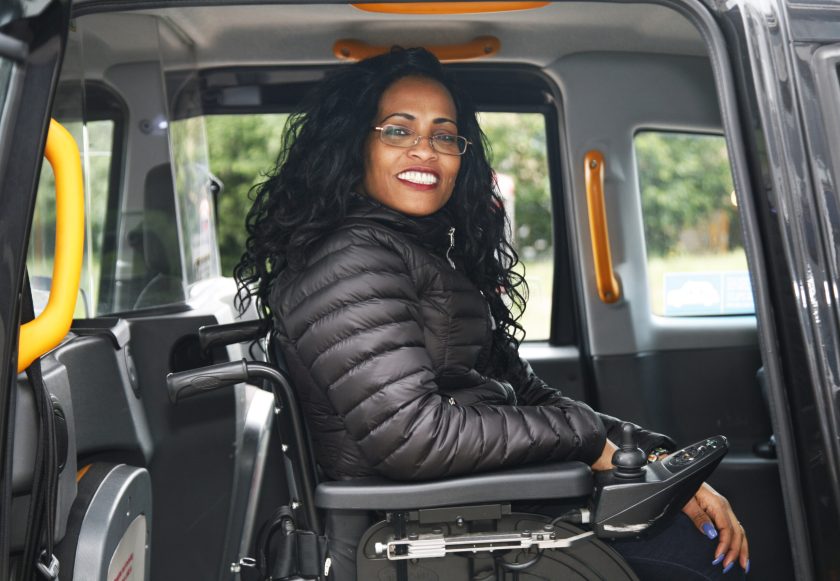
Taxis and private hire vehicles
Requirements on licensing authorities for taxis are limited to requiring them to maintain lists of which vehicles are wheelchair accessible. There is no requirement at a national for a percentage of a fleet to be accessible.
As of July 2023, 13% of all licensed vehicles across England were wheelchair accessible, consisting of 55% of taxis and just 2% of PHVs. The percentage of wheelchair accessible taxis nationally has fallen to 55% from 58% in 2016-17. While all taxis in London are wheelchair accessible, in the rest of England outside of London this falls to 39%.
In summer 2022 the ‘Taxi and Private Hire Vehicles (Disabled Persons)’ Act was passed. This closed a loophole and expanded certain provisions in the Equality Act to apply to all disabled people where previously they only applied to those with particular impairments or in specific circumstances. Now, non-exempt drivers must accept the carriage of any disabled person who could reasonably travel in their vehicle, provide reasonable mobility assistance to enable a passenger to get into and out of the vehicle with their mobility aids, and not make or propose additional charges for doing so.
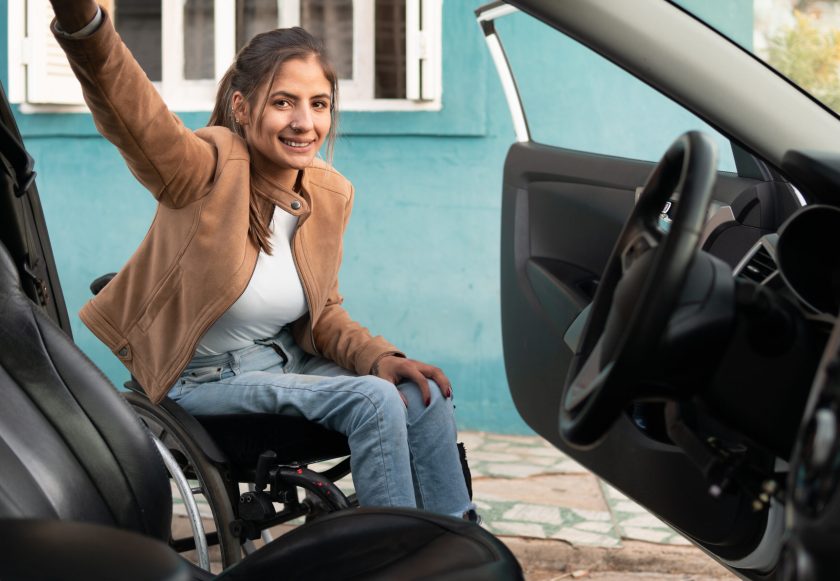
Using a car
Provision of designated accessible parking spaces varies across England. The Manual for Streets recommends that 5% of parking spaces in residential areas be allocated for blue badge holders. Local Authorities can create either statutory spaces, the use of which can be enforced, or advisory spaces which cannot. The former, regulated, bays are used sparingly due to costs of enforcement.


Support us
We can't do this without your support. Take action, give what you can, or sign up as a member - and join our movement of disabled people fighting for a better future.
